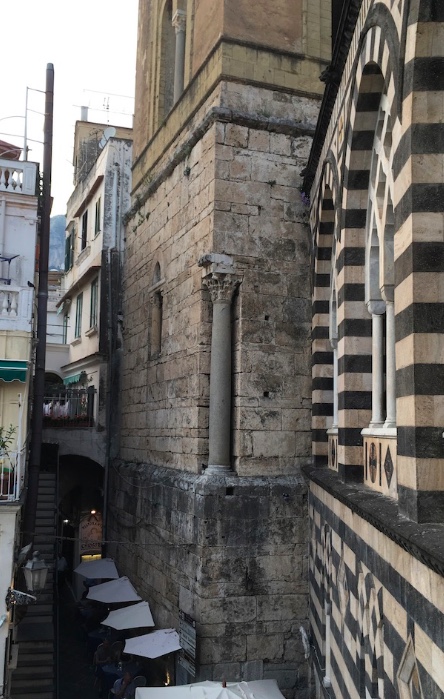Amalfi climbs up the crease between two steep ridges. It’s the town that gives the Amalfi Coast its name.
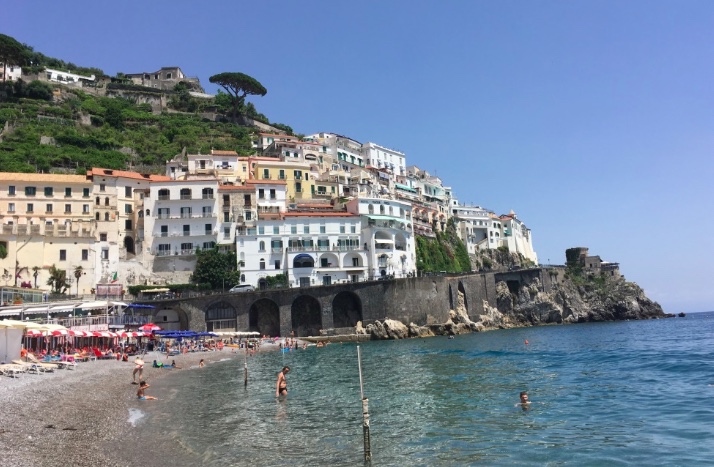
As we disembarked the bus, my first thought was that I could feel the jaws of the tourist trap closing around me:
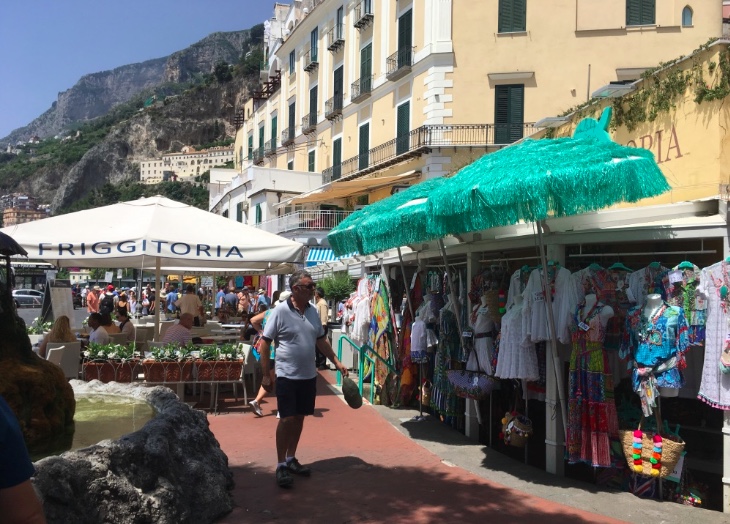
Amalfi is lemon-orchard country: the pottery is painted with lemon motifs, the culinary stores sell slim opaque bottles of lemon liqueur, and lemon is the only slushy flavor to be found.
The other local specialty is ceramics. (It’s not copyright infringement if you’ve screenshotted an entire page of Google Image results, is it?):
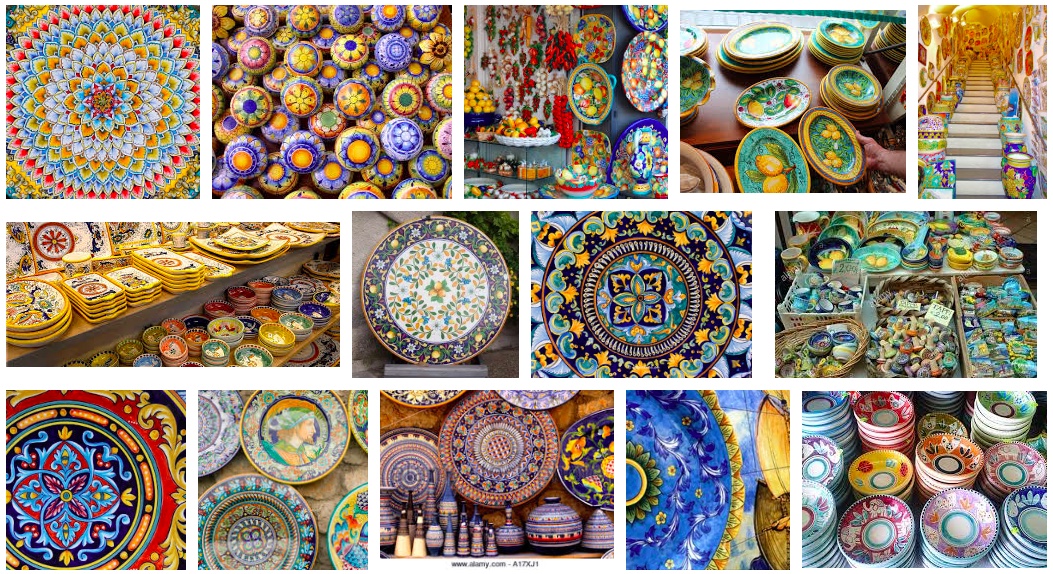
Every bottom floor is a souvenir shop or a pizzeria. Anything that isn’t lemon themed is Murano glass themed, though to Amalfi’s credit, I saw very few Made in China stickers:
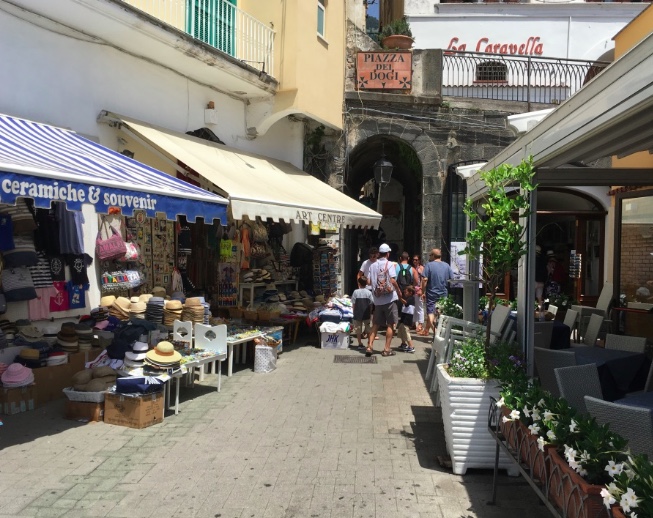
Amalfi is one of those cities all built on top of itself. The streets are a warren that curls and twists and climbs and sinks. Sometimes it turns into stairs; sometimes it drives straight through houses. There are long, cool, lopsided tunnels lit badly by the rare fluorescent lamp. Those tunnels are cool and damp like deep caves even when the sun beats down on the cobbles in the piazzas.
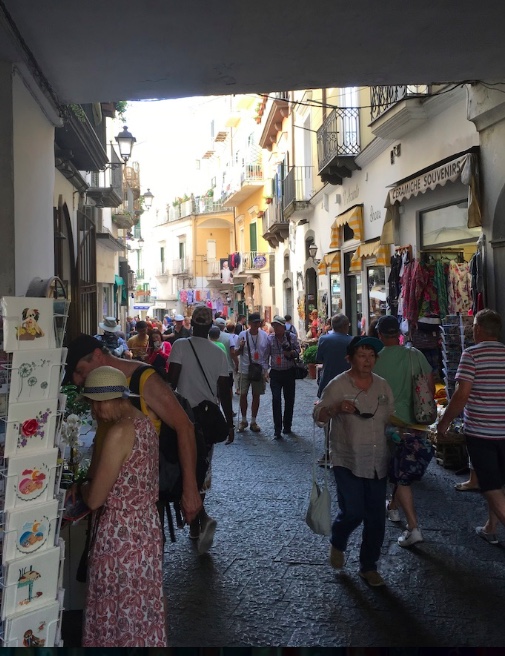
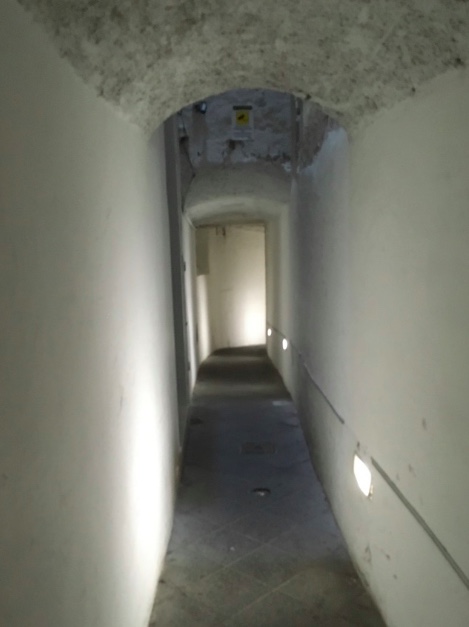
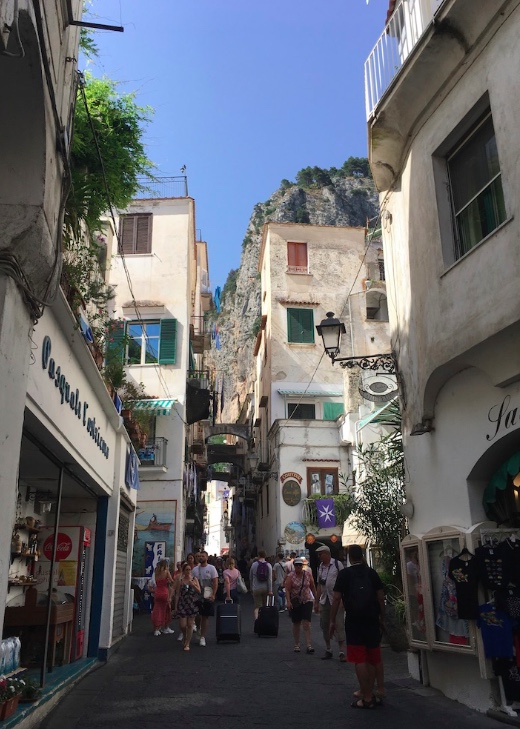
The ninth-century cathedral is so vividly archaic that you feel like you’ve stepped back in time:
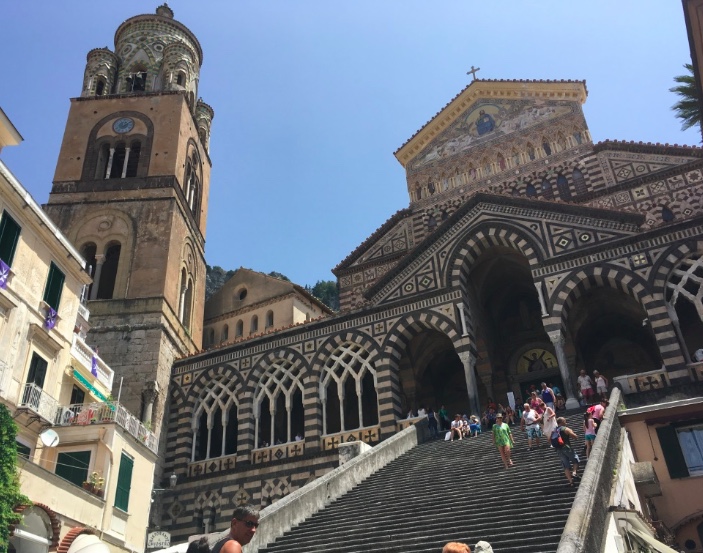
I will circle back to the cathedral at the end of this post, because most of my cathedral pictures have sunset lighting.
As for my tourist-trap first impression, I was so wrong. The history is there; it just took me a while to figure out where to look for it. Catch this bit of Corinthian column embedded in the doorway of a cafe:
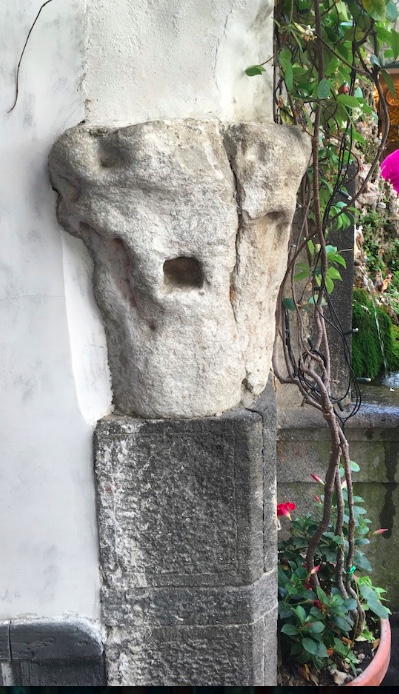
Or these cornices:
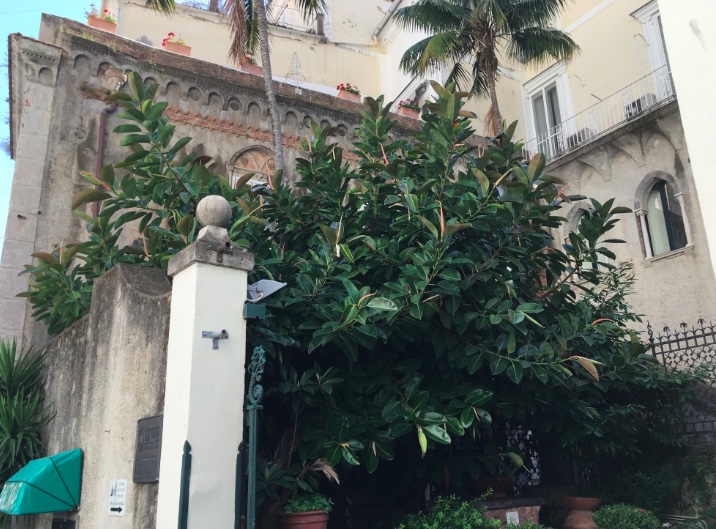
In search of food that didn’t come with a side dish of loud Europop and British retirees, Rachel and I began to climb an anonymous flight of stairs behind a pizzeria:
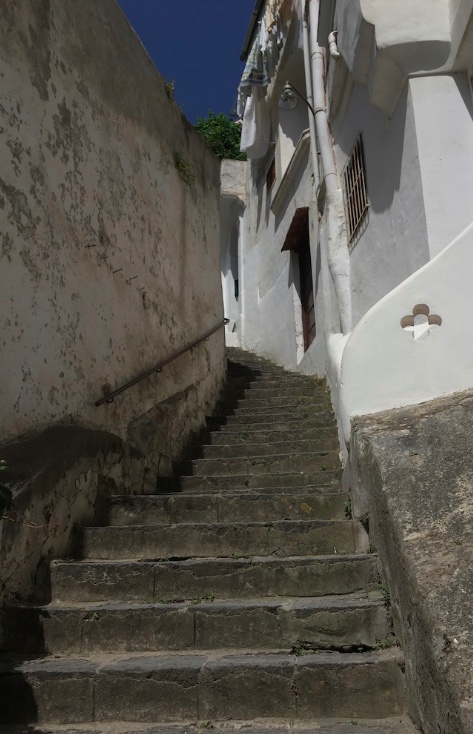
And while it quickly became apparent that the steps were not bound for any cafes, my God, I don’t think I’m ever going to forget that climb. The stairway wound across terraced slopes so steep that the buildings had buttresses.
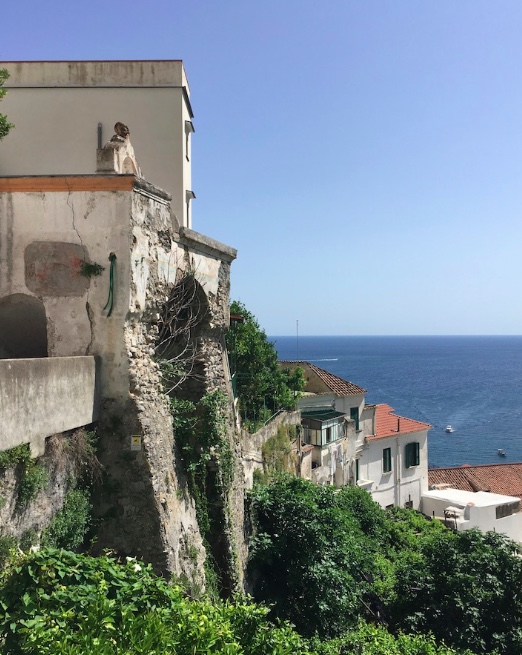
Our path snaked and switchbacked between old houses with tiny medieval windows and modern pottery embedded in their patched stucco. The thing you have to picture is that medieval roads don’t always go around houses; sometimes they cut straight through them. And with these houses built right into the steep sides of the lemon terraces, the stairs would pass through these long shady tunnels that were really the cellars of ancient houses, all piled on top of each other.
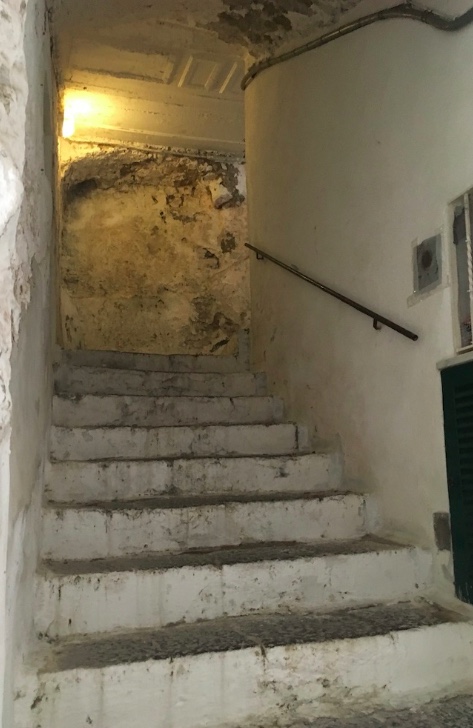
We passed a plaque that translated roughly to “Monastery, 10th century,” though with the modern stucco patched onto the old buildings, you can’t guess the age except by the size of the windows.
Sometimes, the stairs would level out into paths with views that literally took your breath away.
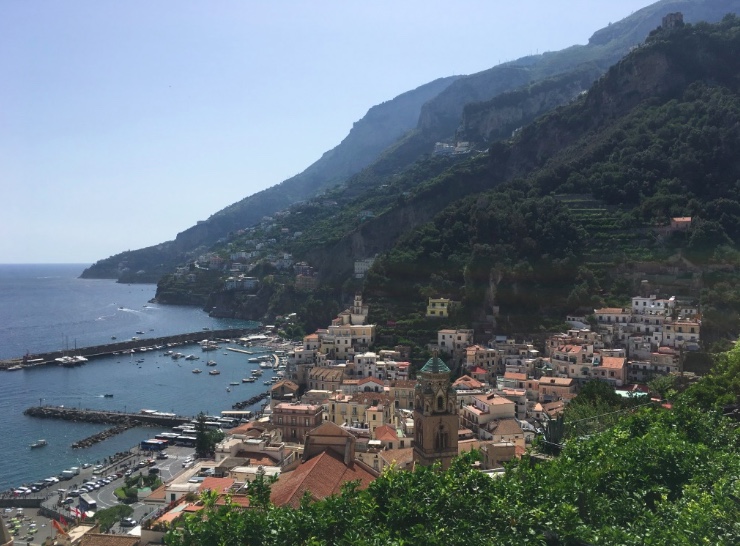
We found a photogenic terrace and did a photo shoot, after which Rachel was emphatically ready to quit, but once I get that historical bit between my teeth, nothing was going to stop me chasing the echoes of those centuries as far as the stairs would go. It was always one more curve, one more curve, we’ll see what’s there and then we’ll go back, but every time we rounded a corner, passed through a tunnel, reached a portico, the next one called me.
Ants and small jumping spiders scuttled across the hot stone paving. Evening-purple morning glory flowers tumbled over the tops of the retaining walls. The air smelled like jasmine. Sometimes you could see the wooden lattices holding the heavy branches of the lemon trees off the ground. The sun baked the stairs into heat shimmers.
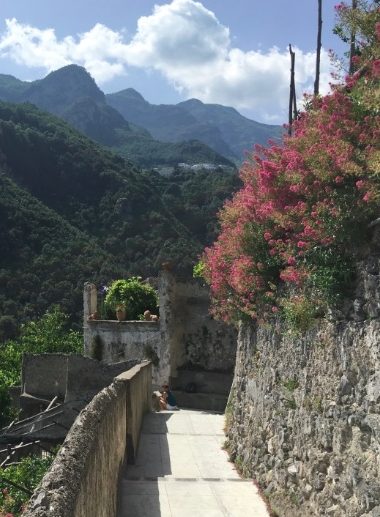
We’d left the tourist chaos far behind; up there it was so quiet. You couldn’t hear the ocean; you couldn’t hear the crowds; you couldn’t hear the pop playing under the cafe awnings. There was no breeze to rustle the leaves. The only sound was our panting breath and scuffing footsteps and the centuries around us. Our water bottles got so hot it was like drinking bathwater. A high dive into the sea has never sounded so appealing.
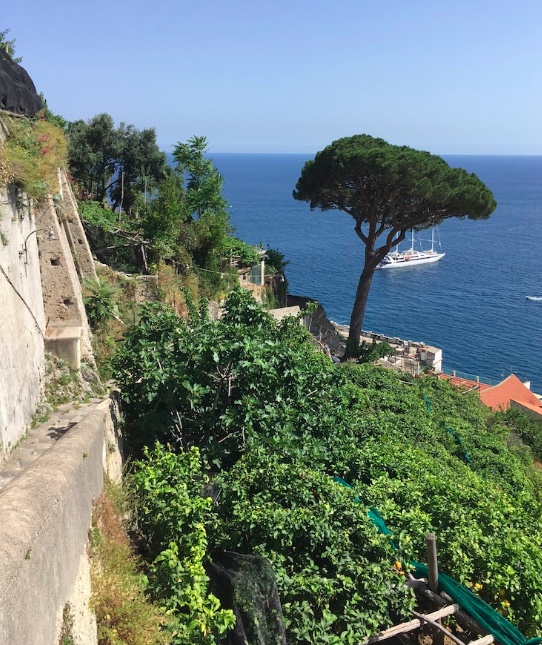
By the time the stairs cut between a pair of houses and brought us face-to-face with this sign, I think Rachel was as close to murder as a Canadian can get:
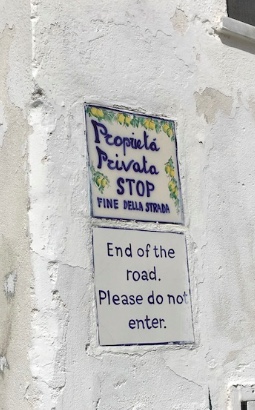
On the way down, my sweaty fingers fumbled and dropped a fifty-cent coin. It went bouncing down the mountain ahead of us. A few minutes later we found it again. I’ve decided it’s my lucky coin. Then I dropped it into my purse and lost track of which one it was, so I probably spent my lucky coin on a lemon slush.
And now we return to the cathedral:
The ninth-century Amalfi Cathedral is decorated with those gold mosaics whose saints have deep-set eyes and narrow faces and fine, silky beards and skin as flawless as plastic. The crucifix over the altar dates from the thirteenth century.
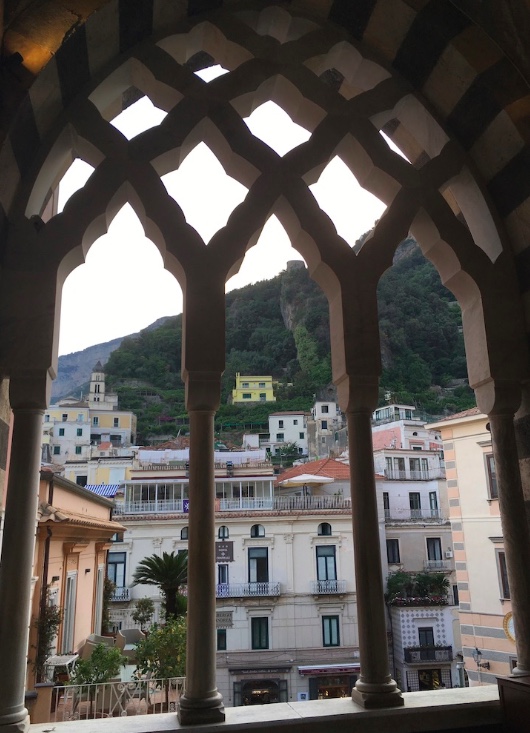
The facade and portico were rebuilt in the 1890s after the original collapsed, but as far as I can tell, they remain pretty true to their original features, which are Arabic-Norman-Byzantine:
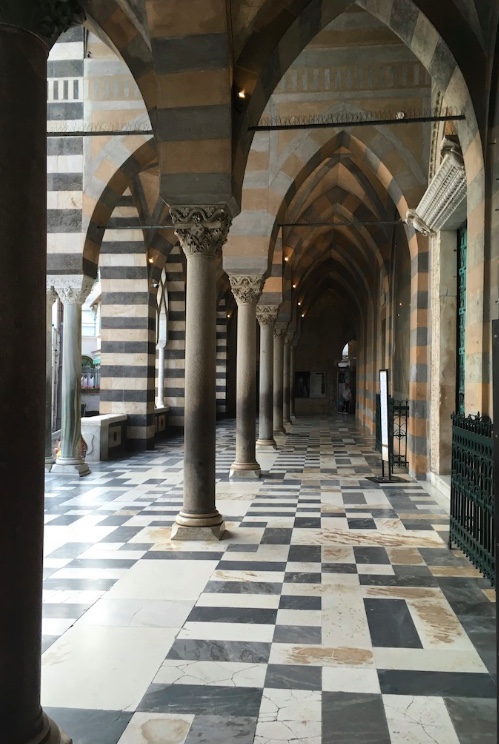
The belltower is made of great weathered blocks of tufa with another Corinthian column randomly embedded into one corner halfway up:
